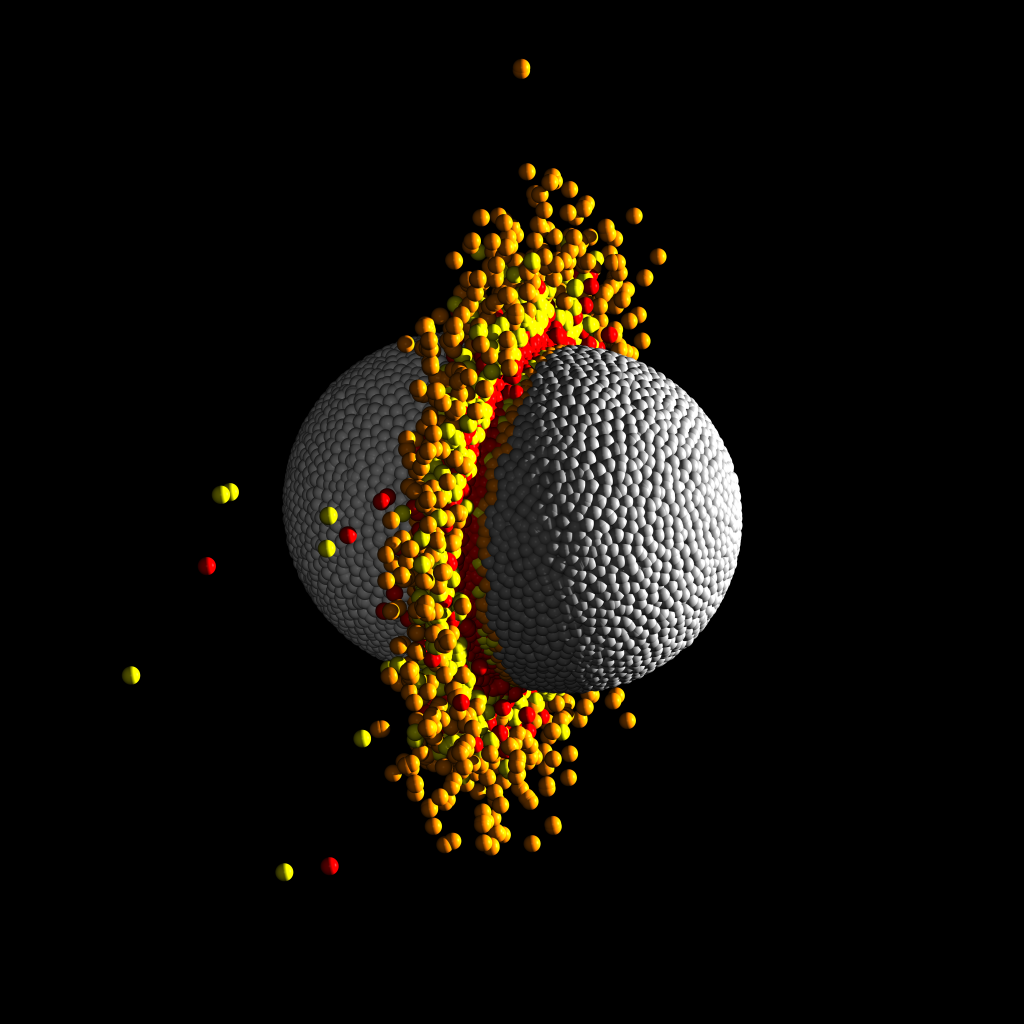SAC: Enormous collision might explain twin planets
Press release from SAC: Two of the exoplanets that are circling around the Kepler-107 star are identical in size but far from equal in weight. This, researchers explain, is the result of a massive collision between two almost identical planets sometime in the distant past.

Today, both exoplanets are about 1.5 times as big in diameter as the Earth. But one weighs 3.5 times more than Earth, and the other weighs 9.4 times more. The heavier one, therefore, contains many more weighty elements than the lighter one. Kepler-107c is similar to the planet Mercury in our solar system, with a core of iron that makes up about 70 percent of its total weight. The slightly lighter Kepler-107b is a much more ordinary terrestrial – or rocky – planet, like Mars but a whole lot bigger. And then comes the most astonishing revelation of all: it is the heavier Kepler-107c that is circling the farthest from the star.
This should not be so, according to some of the most common theories for the formation of planets around the stars. And this discovery has made researchers wonder whether something much more extreme had occurred sometime in the past: a planet collision.
And where exactly have we heard of planet collisions? Here, in our own solar system. The planet Uranus is “tilted” and circles around in a very long course; Mercury shows signs of a collision both on its surface and because of its high metal content; and the Earth and the moon were created when two planets about the size of Mars, about 3.8 billion years ago, collided at an uneven angle so that the metal core from one of the planets ended up in the bigger of the two planets, and thus, only small amounts of iron have been left in the less heavy one: the moon.
In the February 4, 2019 issue of the scientific journal Nature Astronomy Letters, a large group of international researchers describe the results. Aldo Bonomo, from Turin, Italy, is the lead author of the article, and, among others, several researchers from the Stellar Astrophysics Centre (SAC) at Aarhus University are co-authors. The conclusion is that another planet has taken the less heavy rocks, but it is unknown where it has taken them.
Watch a colorful animation of the collision here:
The Kepler-107 star is a yellow dwarf star, 44 percent larger than the sun and with a surface temperature that is a bit warmer. It can be found in the Cygnus constellation, 1714 light years away. The circulation time for Kepler-107c, which constitutes its “years,” is 4.9 days and for Kepler-107b, it is 3.1 days. The planets were discovered by NASA’s Kepler telescope, which observed faint decreases in the star’s brightness every time the planets passed in front of the star. Moreover, the star was observed with the Italian Galileo telescope on the Canary Island of La Palma. That telescope’s purpose is to determine the mass of planets. In all cases, indirect observations are made: the small exoplanets in tight circulations cannot be seen directly with current telescopes.
The data that the Kepler satellite has gathered are all tiny changes in the brightness of individual stars. Some of the changes are caused, as mentioned, when an exoplanet eclipses the star, which results in a brief drop in its luminosity. But lots of other fluctuations in brightness are registered with the same satellite, and these fluctuations are caused by so-called stellar oscillations. Like earthquakes, these asteroseismic observations can reveal to researchers a lot of the inner circumstances of the star in question. From there, they can calculate, for instance, the diameter of the star, information that can then be used “backward” to determine the diameters of the exoplanets that are circling around the star. The knowledge of both diameters and masses provides a value for the tightness mass index of the exoplanets, such as the case with Kepler-107.
Two of the most important research fields for the astronomers at SAC are the hunt for exoplanets and asteroseismology, which means that the department, financed by the DNRF, is an ideal location for this type of collaboration.
Read the scientific article in Nature Astronomy Letters here.
More information about the study can be found at the University of Bristol here.
Further information can be found in a press release from Aarhus University here.
